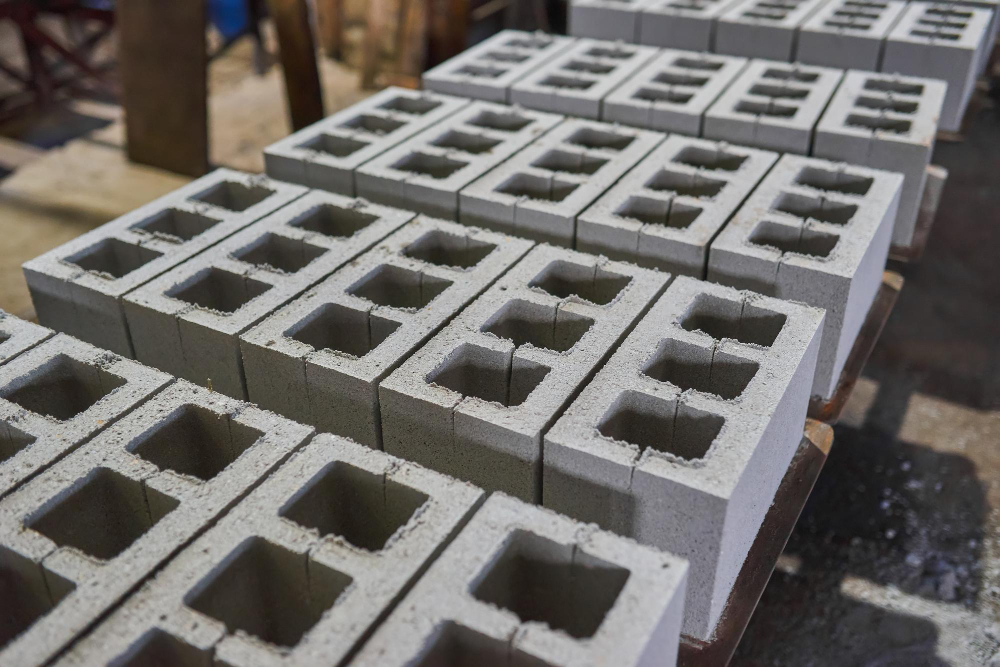AAC Block vs Brick Wall : A Comparison

AAC Block vs Brick Wall : A Comparison
Are you in a dilemma whether to
use AAC Block vs Brick wall ? Both of them have AAC Block stands for Autoclaved
Aerated concrete. It’s production started in 1924 in Europe. This technology
came in Nepal in the last decade only and slowly started gaining popularity
when load bearing structure was replaced by frame structure. Brick as a
building material started from the time unknown and continuing till today.
Hereby, we highlight you the
prime differences between AAC Block vs Brick wall so that you can make a choice
whether to use an AAC Block or to use a Brick wall.
AAC Block Manufacturing process vs Brick Manufacturing technology
Bricks are of various kinds
depending on the material used. The types of bricks are sun-dried bricks, burnt
bricks, concrete bricks, lime brick and fly-ash brick. AAC Blocks are
engineered brick which is manufactured by hardening the mould in high pressure
chamber with steam. Brick is manufactured by putting the dry mould inside the
brick kiln under high temperature at normal atmospheric pressure.
AAC Block Strength Test result vs Brick Strength Test Result
AAC block is half as less strong in compressive strength as brick. AAC Block Strength Test result shows that most of the AAC Blocks have compressive strength of 3.5N/mm2 whereas the minimum strength of a brick that is considered useful in site is 7.5N/mm2. Therefore, AAC block never meets brick in strength test result.

Use as Structural Component
AAC Block cannot be used as
structural component in multi-storied construction. AAC Block can seldom be used as
a support for single floor by increasing its thickness, but it is not
recommended. Kiln manufactured commercial bricks are used in load bearing
structures.
Insulation property of AAC Block vs Brick
As AAC Blocks are best example of
foam concrete, therefore AAC Blocks contain entrapped air, making it sound
proof. AAC Blocks are also bad conductor of heat, therefore they also provide
much better thermal insulation than Brick materials.
Mortar Ratio used in AAC Block and Brick
It is better to use the glue that
comes with AAC Block than using the mortar. This is because curing cannot be
done in AAC Block wall. Water should not be used in AAC Block wall in order to
avoid crack in AAC Block wall. The typical cement sand ratio used in brick wall
is 1:4. But practically, mortar ratio of 1:6 and 1:8 is also used.
Weight comparison between AAC Block and Brick size in Nepal
The weight of a typical brick
size in Nepal 240*115*57 is 2.5 kg whereas the weight of AAC Block for the same
volume will only be about 900 grams. Practically speaking, the volume of one
AAC Block is equal to 6 times the brick. Therefore, we can say that AAC block
is about 3 times lighter than Brick and this will cause load to decrease in
frame structure where AAC block will be used as a brick.
Termite Proof property of AAC Block vs Brick
Whether it is a mud brick or a kiln-heated brick, brick doesn’t have termite proof property at all. But AAC block are always termite proof. It has been attributed to the use of Aluminum powder as a composite material in AAC Block and Aluminum powder is said to be highly toxic. Brick doesn’t have a toxic composite material used and therefore is not termite proof.

Environment Friendly property of AAC Block vs Brick
AAC Blocks are much environment
friendly than brick. Brick is manufactured in kiln where coal is burnt because
efficient electrical technologies for manufacturing of brick hasn’t evolved and
coal is still a cheaper option. AAC Block is manufactured in electrical plants
and don’t emit harmful gases to the atmosphere. Similarly, AAC block uses fly
ash and fly ash is a by-product of metal producing factories. As AAC block
utilizes by product of other factories and doesn’t release harmful gases into
the atmosphere, AAC block is more environmental friendly than brick.
Handling of AAC Block vs Brick
AAC blocks are lighter and
therefore, most easily handled by the masons as compared to brick masonry. But
the problem with AAC block is that AAC block breaks easily when mishandled; so
it should be carefully handled while loaded from the factory and unloaded to
the site. Bricks are heavy, but
mishandling the bricks doesn’t result in too much damage in brick because class
A bricks don’t break even when dropped from a height of 5 feet. Brick being heavier, is also somehow dangerous
for the masons in case of accidents, therefore, it should be carefully handled.
SkillSewa prefers AAC Block over
Brick because it reduces the overall cost in the site and is environment
friendly.